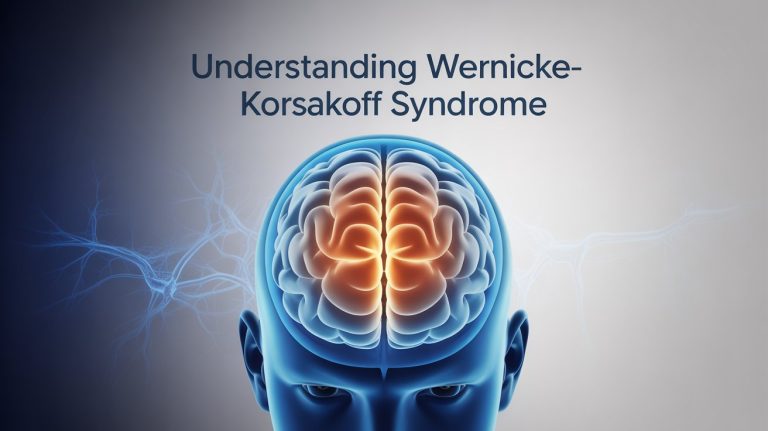Xanax, a widely prescribed benzodiazepine, is often used to manage anxiety and panic disorders. Its fast-acting nature can give quick relief. This makes it a popular choice for people facing stress or sudden panic attacks.
While Xanax can effectively treat short-term issues, people should not ignore its potential for dependence.
Over time, individuals may need bigger doses to achieve the same calming effects, leading to physical and psychological reliance.
When someone tries to stop taking Xanax or lower their dose, they may face withdrawal symptoms. These symptoms can make the process hard and even risky without the right support.
Knowing the Xanax withdrawal timeline and spotting the symptoms are important first steps for safe recovery.
Seeking professional treatment not only minimizes health risks but also provides the tools needed for long-term healing.
What Causes Xanax Withdrawal?
Xanax elevates the effects of gamma-aminobutyric acid (GABA), a neurotransmitter in the brain responsible for calming overactive nerve activity. This slows down brain activity, helps you feel relaxed, and reduces anxiety and panic symptoms.
However, with long-term or heavy use, the brain begins to rely on Xanax to maintain this calming effect.
As time goes on, the brain makes less GABA. This makes it harder for the body to regulate itself without the drug. This causes physical dependence. The brain and body adjust to Xanax and need it to work “normally.”
When someone suddenly stops taking Xanax or lowers their dose a lot, the brain has a hard time adjusting. This can cause withdrawal symptoms.
These symptoms happen because the body is not getting the outside support it needs. This can lead to increased anxiety, physical pain, and, in serious cases, dangerous issues like seizures.
Xanax Withdrawal Timeline
The Xanax withdrawal timeline can change based on several factors. The dosage taken, the duration of use, and personal factors like age, metabolism, and health include these elements.
Day 1-2: Onset of Symptoms
Withdrawal symptoms usually appear within 6-12 hours after the last dose, as Xanax quickly leaves the system.
During this phase, people may feel mild discomfort. They might experience anxiety, restlessness, and trouble sleeping. This happens as the body adjusts to not having the drug.
Day 3-7: Peak Withdrawal Symptoms
This is often the hardest phase of withdrawal. Symptoms tend to peak in intensity during days 3 to 7. Individuals may experience:
- Severe anxiety and panic attacks
- Muscle pain, tremors, and headaches
- Nausea or vomiting
- Irritability and mood swings
In some cases, serious symptoms like hallucinations or seizures can happen. This makes this phase very dangerous without medical help.
Week 2-4: Gradual Improvement
The acute physical symptoms usually begin to subside by the second to fourth week. However, psychological symptoms can persist.
Many individuals also report lingering feelings of restlessness and cravings as the brain continues to heal.
Months 1-3: Long-Term Recovery
During the first few months, most physical symptoms resolve, but some individuals may still face lingering challenges, including:
- Chronic anxiety or panic
- Sleep disturbances (insomnia or nightmares)
- Cravings for Xanax
- Mood swings and irritability
Long-term support from therapy and professional treatment can help people during recovery and rebuild their mental and emotional health.
100% Confidential Support is Available 24/7
No matter what you’re going through, you’re not alone. Our dedicated team is here to provide a safe, judgment-free space where you can talk openly and honestly. Whether you need emotional support, resources, or just someone to listen.
We’re here for you—completely confidential and always respectful of your privacy. Call us today!
Common Symptoms of Xanax Withdrawal
Xanax withdrawal can trigger a range of symptoms that affect both the body and mind. The severity of these symptoms can change. It depends on factors like dosage, how long someone uses it, and their overall health.
Physical Symptoms
As the body adjusts to functioning without Xanax, physical discomfort is common.
Symptoms may include:
- Headaches
- Tremors
- Sweating
- Nausea or vomiting
- Muscle pain
Psychological Symptoms
Xanax withdrawal can also significantly impact mental and emotional well-being.
Common psychological symptoms include:
- Anxiety: Rebound anxiety can be more intense than before treatment.
- Panic attacks: Sudden, overwhelming episodes of fear or dread.
- Insomnia: Difficulty falling or staying asleep, often leading to fatigue.
- Depression: Feelings of sadness, hopelessness, or lack of motivation.
- Cognitive difficulties: Problems with memory, focus, and decision-making.
Severe Symptoms
In some cases, withdrawal from Xanax can lead to life-threatening symptoms, particularly without medical supervision. These include:
- Seizures: Dangerous convulsions that require immediate medical attention.
- Hallucinations: Seeing, hearing, or sensing things that aren’t there.
- Psychosis: Severe mental disturbances, including paranoia and delusions.
Contact Solutions Healthcare
Battling with Drug and Alcohol Addition? Remember, you are not alone and we are here to help you!
Why Xanax Withdrawal Can Be Dangerous
Xanax withdrawal is more than just uncomfortable—it can be dangerous and, in some cases, life-threatening.
One of the most serious risks of withdrawal is seizures, which can occur when the brain reacts to the sudden absence of Xanax. These seizures can lead to significant medical complications and require immediate emergency care.
Quitting “cold turkey”—stopping Xanax abruptly without medical supervision—dramatically increases the risk of severe symptoms like seizures, hallucinations, and psychosis.
Without a good tapering plan and support, the body and brain can have a hard time adjusting. This makes withdrawal more intense and much more dangerous. This is why professional medical care is critical for anyone attempting to stop or reduce Xanax use.
Treatment for Xanax Withdrawal
The safest and most effective way to manage Xanax withdrawal is through a medically supervised detox program.
Key aspects of medical detox include:
- Slowly reducing the dose to allow the body to adjust over time and minimize withdrawal severity.
- Doctors may use other benzodiazepines, anti-anxiety medications, or sleep aids to help manage discomfort and prevent complications.
Therapies
Once the physical symptoms of withdrawal are managed, addressing the psychological effects of Xanax dependence is also equally important. Effective therapies include:
- Individual therapy is one-on-one counseling to address the emotional impact of withdrawal and underlying anxiety or panic disorders.
- Cognitive Behavioral Therapy (CBT) is an approach to help individuals manage anxiety, change thought patterns, and develop healthier coping mechanisms.
- Holistic approaches include supportive therapies such as mindfulness practices, nutritional counseling, and sleep strategies to promote overall wellness and recovery.
Aftercare and Long-Term Support
Recovery from Xanax withdrawal doesn’t stop after detox. Long-term support is essential to ensure lasting success. Options include:
- Ongoing treatment like outpatient programs, group counseling, or individual therapy to provide continued care and guidance.
- Relapse prevention strategies involve learning tools to recognize triggers, manage stress, and avoid situations that may lead to relapse.
Why Choose Solutions Healthcare for Xanax Withdrawal Treatment
At Solutions Healthcare, we specialize in helping individuals safely and effectively overcome benzodiazepine dependence, including Xanax withdrawal. Our team of skilled professionals knows how hard Xanax withdrawal can be. We offer the expert care you need to get through this tough process.
We focus on safe and comfortable detox. This helps reduce the risks of Xanax withdrawal. These risks include severe symptoms like seizures and psychological distress.
We also provide complete support, including mindfulness techniques, nutrition advice, and sleep management, which help promote healing and long-term well-being.
If you or a loved one is struggling with Xanax dependence, Solutions Healthcare is here to help. Don’t go through withdrawal by yourself. Contact us today to learn about our caring and effective Xanax withdrawal treatment programs. Your recovery starts here.
References
- National Institute of Health (NIH): A Review of Alprazolam Use, Misuse, and Withdrawal
- The American Journal of Psychiatry: Benzodiazepines: A Perspective
- American Academy of Family Physicians: Tapering Patients Off of Benzodiazepines






















